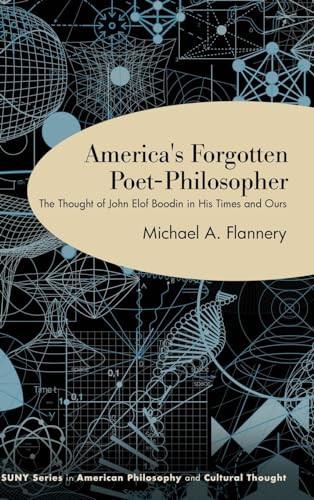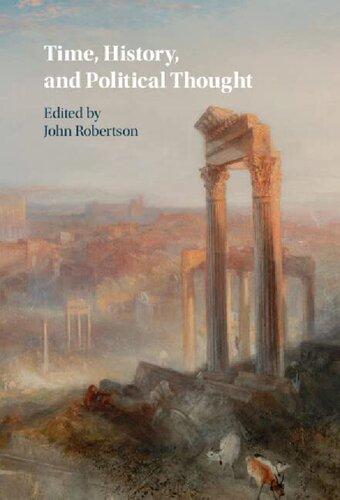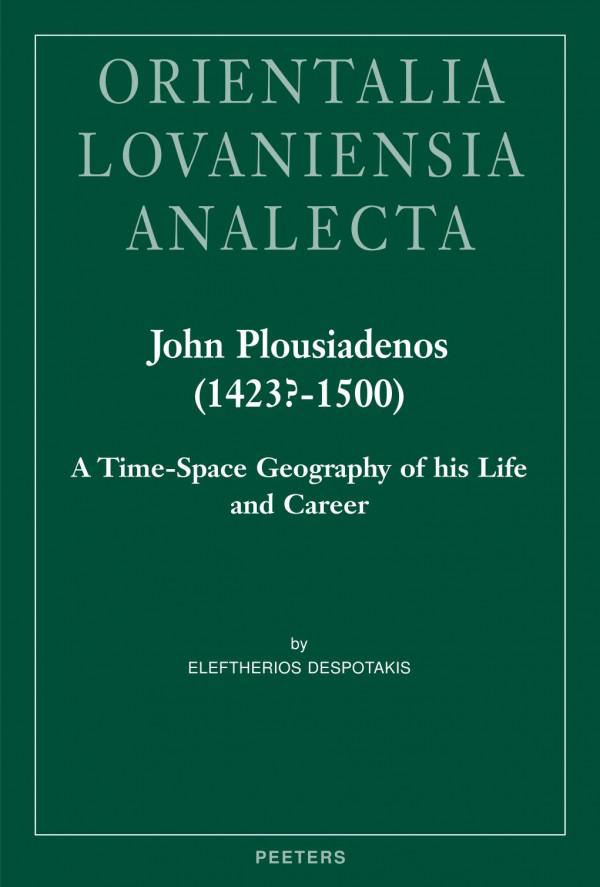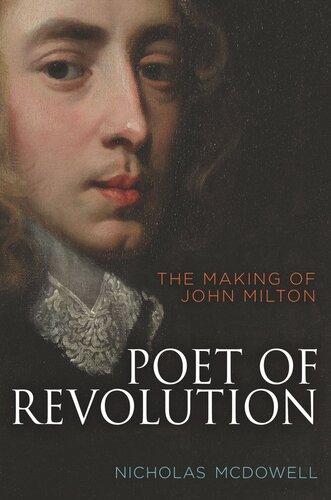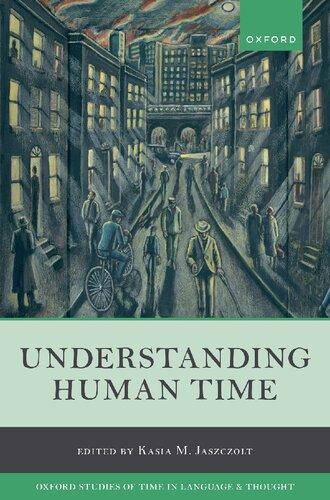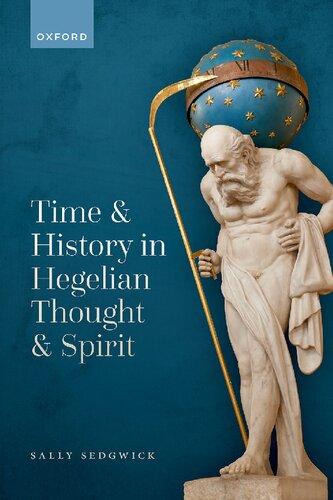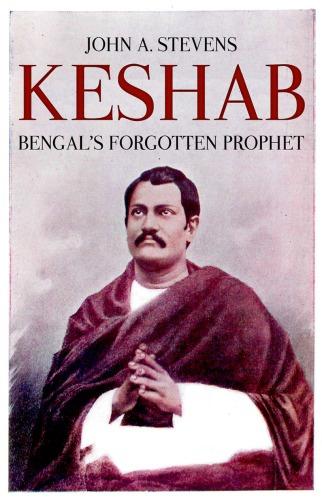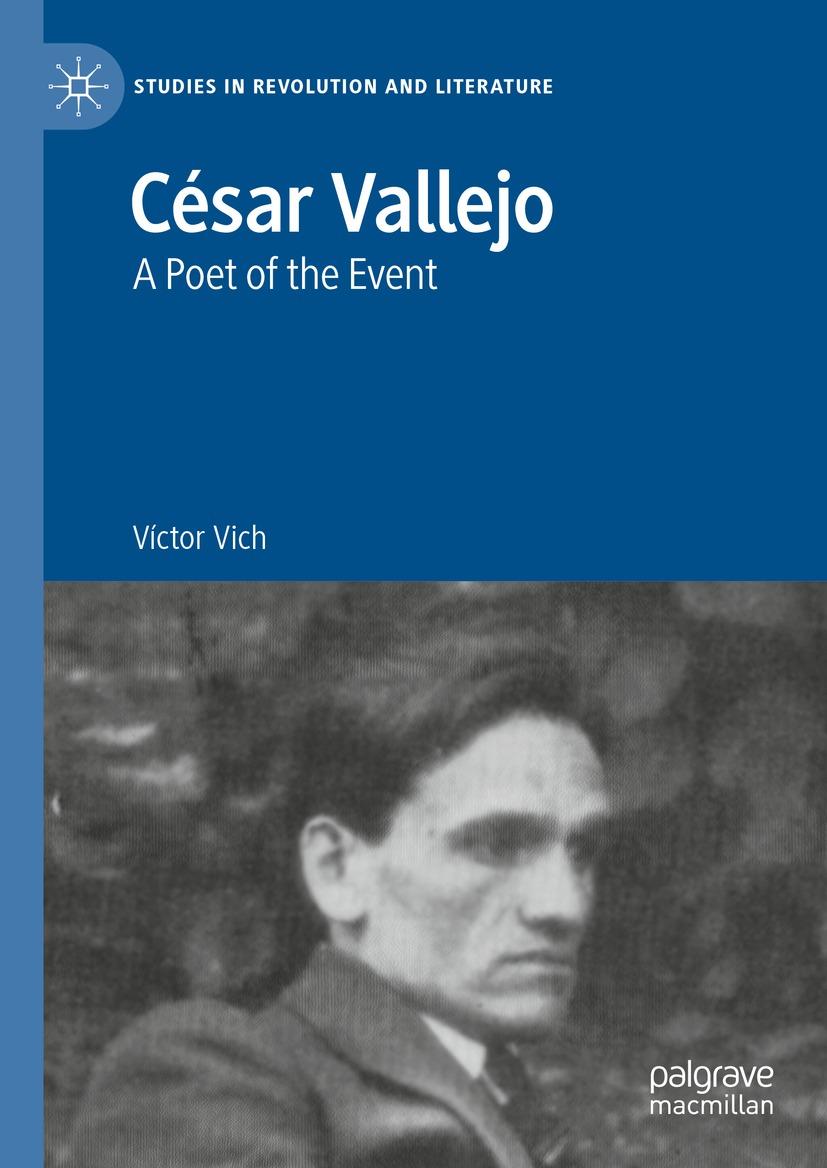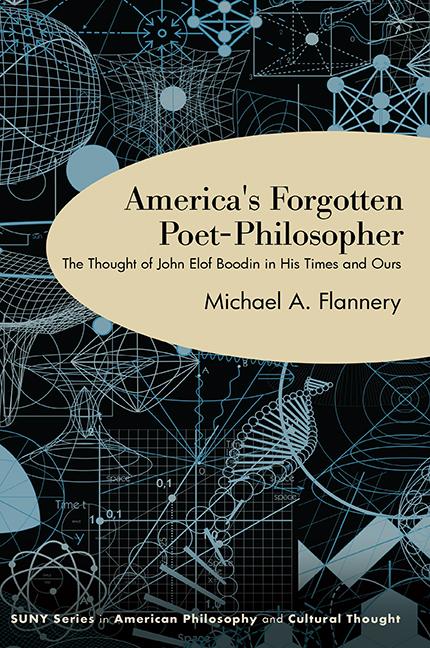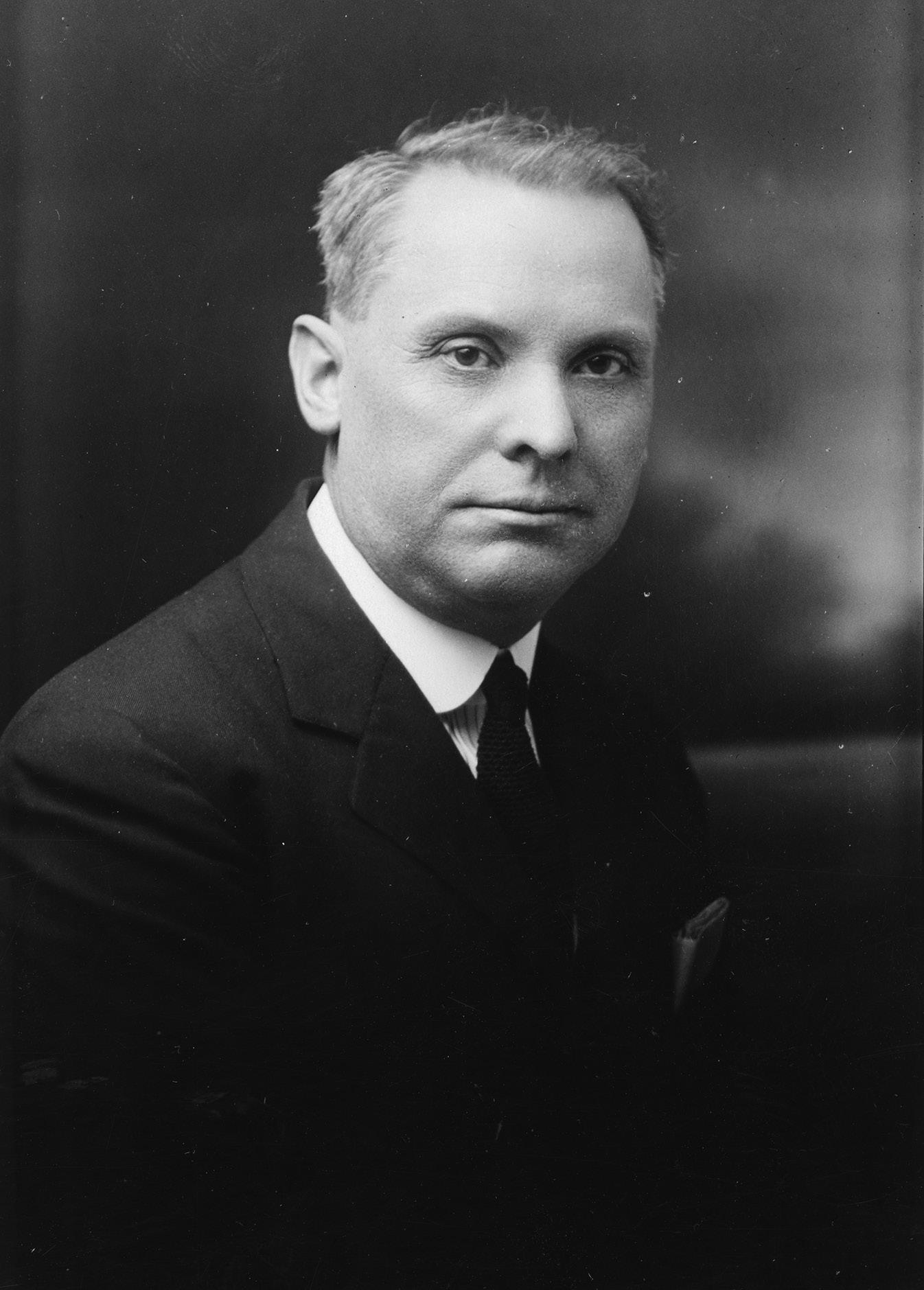Prologue
Who Was John Elof Boodin?
Before examining the thought of John Elof Boodin it will be helpful to have a general sketch of his life, covering his origins, his immigrant experience, his education, his professional career, and the significant influences bearing upon them. Although this book is not intended to be biographical in any real sense, it must be recognized by intellectual and cultural historians that every concept ever formulated in the past came from a real life actually lived. The historian is doing neither the craft nor the reader any service by lapsing into the antiquarianism of a name-and-date recitation nor by reifying ideas as entities without owners; either extreme is simply bad history. Barbara Tuchman who knew better than most how to write good history in an engaging style acknowledged all biography (even the shortest) as “a prism of history . . . [that] attracts and holds the reader’s interest in the larger subject.” Without it, she adds, “the central theme wanders, becomes diffuse, and loses shape. One does not try for the whole but for what is truthfully representative.”1 It is in that spirit this life of our subject is offered.
Early Years
His origin was as obscure as his legacy, born in the parish of Pjetteryd amidst the Småland highlands of southern Sweden on September 14, 1869, the middle of a large household of ten children. His mother Kristina (his father’s second wife) and Elias Nilsson provided the warm, nurturing environment lacking in the cold and often inhospitable climate that had forged the character of these strong, self-reliant people since the Nordic Bronze
Age. He died in Los Angeles, California, on November 14, 1950, a very different time and place. As mentioned, this is not the story of his life; that has already been ably told by Charles H. Nelson.2 It is, however, an attempt to reveal the remarkable intellect that graced this planet during that period. Boodin himself described his life as emerging “from the darkness like a meteor,” a celestial rocket that “makes a transient trail and disappears into the darkness again.”3 In the following pages I will endeavor to explain the brilliance of that meteoric mind that deserves more than the passing notice of a falling star.
The first sixteen years of young John’s life were circumscribed by the daily rhythms of a harsh but predictable farm life (see the appendix). Raised in reverent piety dictated by confessional Lutheranism, the boy learned the harsh realities of agricultural life softened by an idealism drawn from a land steeped in ancient history and myth. As Boodin described it, “I was nurtured on the Bible and the legends of the place. There were groves and alters of the old Stone Age and there was the much older background of the trolls that lived once in the hills and in the bordering lake.”4 It was an early life well suited to stimulating the exacting habits of mind of a philosopher and encouraging the emotional transports of the poet.5 Boodin would become both.
The first to notice Boodin’s brilliance was Pastor C. A. Bomgren and his successor Claes Sjöfors of the local church. It was the Sjöfors family who took him in and prepared him for the gymnasium (the equivalent of a college preparatory school) in Uppsala. This ended John’s agrarian life and launched him toward the trajectory of a remarkable academic career. After two years at the Fjellstadt school, Boodin probably heard of the Swedish-American communities emerging with strong ties to Swedish Lutheran pastors, and Pjetteryd had an exceptionally large emigration to America in the last half of the nineteenth century. In the summer of 1887 Boodin booked steerage to America and landed in Colchester, Illinois, a coal-mining town about ninety miles northwest of Springfield. The peculiar migration to this out-of-the-way Midwestern location is probably suggested by the fact that his brother Johannes located there with a thriving community of about 100 to 150 fellow Swedes. The realism John learned on the farm was now reinforced by spending two years as a blacksmith, all the while honing his skills in English and adding as finances and circumstances allowed to his education. In 1890 he completed his teacher’s training at the college in Macomb, Illinois, and two years later entered the University of Colorado. Shortly thereafter he had an opportunity to work with the Episcopal Church
and the Swedish immigrants in Minneapolis, and so from 1893 to 1894 he found himself at the University of Minnesota. Boodin describes this as an important time for his development. It was here that he was introduced to the social sciences by the university’s influential William Watts Folwell and to the psychology of William James by James Rowland Angell, who would later serve as president of Yale. Both of these men would have a profound impact on Boodin’s career.
Go East Young Man!
Although Horace Greely had advised America’s youth to go West, Boodin had his sights set in the opposite direction. For a young man with the scholarly turn of mind now so in evidence with Boodin, the future lay in the settled academies of New England—Dartmouth, Yale, Harvard, and so forth. While Boodin yearned to attend Harvard, for the immediate future Providence, Rhode Island, would do nicely, and a new and extremely fertile period opened for the aspiring student when he headed east to Brown University. It was there that James Seth introduced him to philosophy. Here his remarkable academic pedigree began; it was 1894.
At Brown, Boodin started a small Philosophical Club and it is there that he met “the man whom I wanted most of all for a friend,”6 Harvard professor William James. There was good reason, for James’s reputation preceded him. He had helped make psychology (then typically taught as a branch of philosophy) an independent discipline with his massive, two-volume Principles of Psychology (1890). In that landmark work James established psychology as an experimental science emphasizing the importance of a wellfounded phenomenology of experience. It influenced Edmund Husserl, the founder of modern phenomenology. John Dewey, another of pragmatism’s leading lights, singled out James’s discussion of conception, discrimination and comparison, and reasoning in Principles—not his later Pragmatism (1907)—as most influencing him in his abandonment of Kantian idealism for functionalism.7 By the time Boodin met James the Harvard luminary was well on the way toward establishing himself among America’s leading exponents of pragmatism, an idea he carried forward from Charles Sanders Peirce and developed more fully into a theory of experiential and empirical truth. Although Peirce coined the term in 1878, James acknowledged his debt and took the idea in these new directions. More will be said about pragmatism later. Besides his reputation for pragmatism, James would pub-
lish in just a few years his most widely read and bestselling title, Varieties of Religious Experience (1902), a book that would launch modern religious studies. But perhaps James became most revered for taking philosophy out of the abstract ivory tower and into our daily lives; this is what Boodin most wanted to befriend, and rightly so. As James’s biographer has so well stated:
In place of the mythological world of fixed ideas, James has given us a world of hammering energies, strong but evanescent feelings, activity of thought, and a profound and restless focus on life now. For all his grand accomplishments in canonical fields of learning, James’s best is often in his unorthodox, half-blind, unpredictable lunges at the great questions of how to live, and in this his work sits on the same shelf with Marcus Aurelius, Montaigne, Samuel Johnson, and Emerson. James’s best is urgent, direct, personal, and useful.8
But ironically the young Boodin, instead of being struck dumb by the awed presence of his idol, used the occasion of their meeting to challenge James. James had just published “Is Life Worth Living?” in the International Journal of Ethics (October 1895) and Boodin’s recently formed philosophy club used the occasion to invite America’s leading pragmatist to respond to members’ reactions to the paper. James did respond, but no critique was more thorough and telling than Boodin’s. He argued that James provided no solid criteria for values and instead “made all our superstitions, day dreams and air castles equally sacred with the best established truth.”9 James took Boodin’s criticisms to heart, gave him the sobriquet “Orator,” and launched an enduring friendship with the young and eager scholar. Boodin believed that James’s interest was sparked not only by his strong and compelling intellectual engagement with James but also by the fact that he was “different,” an immigrant background with an unusual accent, “surrounded with an air of mystery.” It was through James that Boodin learned the heart of pragmatism: “How ideas must terminate in concrete experience in order to be declared true.”10 Throughout their association up until James’s death on August 26, 1910, Boodin was treated as much as a potential convert to the cause of pragmatism as a friend. Perhaps this is because James saw so much promise in Boodin’s work. When the latter’s Time and Reality was published in 1904, James called it “a masterly piece of work, both in thought and style, and represents a synthesis vast enough, and original enough to give you an admitted master’s place.”11 As time passed, James increasingly pressed Boodin to join the pragmatist ranks, an invitation from which Boodin remained less
resistant than aloof. Boodin, it seems, preferred the role of the uncommitted critic and commentator rather than partisan participant. Speaking of James’s passion for pragmatism, his biographer has written:
James’s ambitions for pragmatism were breathtaking. When he compared the pragmatist movement to the Protestant Reformation, he was not being ironic. Just as he was launching the lectures in October 1906 [the Lowell Lectures on pragmatism], he wrote to Giovanni Amendola, one of Papini’s Italian pragmatists, “I think that pragmatism can be made—is not Papini tending to make it?—a sort of surrogate of religion, or if not that, it can combine with religious faith so as to be [a] surrogate for dogma.” Saving his best shot for last, as he had in Edinburgh [at the Gifford Lectures, 1901–1902], he closed his pragmatism lectures by saying, “On pragmatistic principles, if the hypothesis of God works satisfactorily in the wider sense of the word, it is true.” This is not the Protestant God, not the Christian God, not monotheism.12
Boodin would have much more to say about God and religion, but it is worth pointing out in this context something very important about our subject of interest, namely that Boodin had his influences but he was always his own man. We will see later on as we examine Boodin’s ideas that his understanding of God and pragmatism was not James’s. James was surely an influence on Boodin’s thought, but it never impressed itself upon him like a carbon copy. In fact, if we are to find a stronger influence on Boodin we must look elsewhere.
On to Harvard and Royce
In 1897 Boodin was able, with the assistance of Brown University psychology professor Edmund B. Delabarre and a Hopkins scholarship obtained with the help of Harvard’s Bussey professor of theology Charles Carroll Everett, to enter Harvard, at that time the epicenter of American philosophy. It is a measure of Boodin’s intellect and commitment to his studies that virtually every faculty member wherever he attended was immediately impressed with his abilities. The only person who apparently needed convincing was the senior faculty member of Harvard’s philosophy department, George Herbert Palmer, who feared that the Swedish immigrant might not have sufficient proficiency in English and perhaps more subliminally might not “fit in” to
the culture at Harvard Yard. Assuaged of Palmer’s concerns, Boodin entered a new and important chapter of his education. Here he would be proximate to American philosophy’s best and brightest, not only William James but also major figures such as Hugo Münsterberg, George Santayana, and most significantly Santayana’s mentor, Josiah Royce.
When Boodin arrived at Harvard, Royce had been in Cambridge for five years. He had already established himself as America’s foremost absolute idealist with The Religious Aspect of Philosophy (1885). John McDermott has aptly described Royce as one who “combines the approach of a preacher with that of an extraordinary intellectual virtuoso.”13 And Boodin would see Royce at the height of his career and influence. Royce’s argument for an absolute mind—the Absolute—with all finite minds forming a basis for truth over error was what James’s pragmatism was designed to respond to. For him, thought could pick its objects purely behaviorally and experientially. But it would be wrong to say that Royce has nothing in common with pragmatism. In fact, pragmatism deserves a more nuanced approach than it is often given. It is more accurate to see pragmatism consisting of two strands: one characterized as “radical empiricism” as promoted by James and Dewey, and a second “idealist” current followed by Peirce and Royce.14 (Another way of dividing pragmatism will be discussed in chapter 6.) Thus, when Boodin came to Harvard he found himself in the midst of these two distinct manifestations of pragmatism. It is no wonder then that Boodin’s ideas would become blended as it were. Boodin’s biographer sees “the realistic and scientific aspects of James’s pragmatism [that] permeated Boodin’s idealistic metaphysics” as “paradoxical,” but seen in the light of these two variations on the pragmatic theme perhaps less so.
In any case, when Boodin chose to work on his dissertation—“The Concept of Time”—under Royce, he was coming under the influence of America’s best philosopher of religion. 15 More importantly, while James was Boodin’s soulmate, Royce provided the greatest influence over Boodin’s own developing metaphysic through the oppositional character of Royce’s idealism. However, far from creating a chasm between mentor and protégé, Boodin’s stimulating influence and insightfulness prompted Royce to confess to Boodin as he launched his career in the isolation of Grinnell College in Iowa (1900–1904) that it was the settled opinion of the faculty that he “was the best metaphysical mind that had come to Harvard so far.”16 Royce would remain Boodin’s friend and professional ally until the former’s death in 1916. When his student was searching for a publisher for what would become
his book Truth and Reality, based upon his dissertation, Royce told George Platt Brett Sr. of Macmillan Publishing in a letter dated January 2, 1911:
Professor Boodin is a rising man, with a good record and standing as a philosopher,—as strong a man as any of his age in the West. I have advised him to get himself into book form as soon as possible. His essays, so far, are predominantly although not extremely technical. But he is clear and wholesome, and ought to win a good hearing. I should advise your taking up the question of his proposed book. And I commend him to your earnest attention.17
This is high praise coming from one of America’s most noteworthy living philosophers. It seems as though Brett took Royce’s recommendation to heart; Macmillan would become Boodin’s book publisher for the remainder of his career.
Given the intimate relationship between Royce and Boodin, it is worth examining the two a little more closely before moving on to a discussion of his subsequent years at the University of Kansas and the University of California at Los Angeles. Although Boodin always remained an independent thinker, it would be unrealistic to think that someone as closely connected to his early training as Royce would have no effect. For Royce the Absolute is manifested in humanity itself and everyone can (at least potentially) be assured of fulfilling this positive significance in their lives by being a part of a community expressed in the will of the Absolute. It has been noticed that in this there is a trend toward process philosophy, different from the methodologies of idealism but nonetheless reminiscent in the foundational work of Alfred North Whitehead and Charles Hartshorne.18 Here Boodin’s emergentism suffused throughout his “pragmatic realism and cosmic idealism” forms a synthesis between Royce and James catalyzed through “creativity” that somehow leaves one with the impression that there is always more of Royce than James in Boodin’s pragmatism.19 Although James thought that Royce’s Absolute was a form of theological determinism that was unnecessary under pragmatic testing, we shall see that Boodin’s A Realistic Universe (1916), Three Interpretations of the Universe and God and Creation (1934), and Religion of Tomorrow (1943) develop a unique and productive response to this question as if in answer to a dialogue between the two men that had been raging in his head since his Harvard days. All of this would be cast within a strong
sense of community no doubt drawn especially from Royce in The Social Mind (1939), Boodin’s important contribution to sociology. Of course, Boodin always gave science a close reading, and no scientific issues bearing upon these issues were rifer than the nature of evolution, both cosmological and biological. Here Boodin gave his response in Cosmic Evolution (1925) that would address ideas only touched on by Royce and James.
Academic Life: An Assessment, 1904–1967
Boodin would hammer out these works at three institutions. The first was at the University of Kansas beginning in 1904. His time at Kansas was troubled by campus politics and run-ins with the administration. Continued difficulties marked his departure, effectively begun with a leave of absence in which he spent 1912 to 1913 in “exile” in Cambridge, Massachusetts. In the fall of 1913, Boodin accepted an invitation to join the faculty at Carleton College from his good friend Donald Cowling, the institution’s president. This period has been aptly described as one of “loyalty and deferred ambition.” As Boodin’s Kansas experience was marked by strife, his years at Carleton, located just south of Minneapolis, were tranquil, and the atmosphere must have seemed congenial since Boodin had worked with Swedish immigrants through St. Mark’s Episcopal Church in that city some twenty years before. Despite these advantages, Boodin’s ambitious career and burgeoning publication record had him yearning for a larger, higher profile academic setting. He spent 1927–1928 as a visiting professor at the University of Southern California where he was reunited with an old friend, Charles Henry Rieber. Rieber became dean of the College of Arts and Letters at what was then the Southern Branch of the University of California (now UCLA). The school was growing fast, and it was almost certainly through Rieber that Boodin was offered a position to join the philosophy faculty there in 1928. He would remain there for the rest of his career.
What influence did place have in Boodin’s thought? He was certainly aware of it and said quite explicitly, “My philosophy has thus taken form on the prairies of the great Middle West—the heart of old America—with its strong common sense and conservative social philosophy. The expansiveness of nature, with its unimpeded vistas and yet its sense of homely friendliness, must, it would seem, in the course of years get into a man’s spiritual outlook. So far as my social relations are concerned, they have mostly been with the Western students whose hearts and minds have been
as expansive as the prairies.”20 One thing is sure: Boodin’s ideas were shaped by distinctly American patterns of individualism tempered by community responsibility unfamiliar to Europeans constrained by ancient institutions hardened by centuries of tradition and custom. Swedish though he was, Boodin’s mind was shaped and transformed by his experiences in America, from his blacksmithing days in Illinois to his life on America’s western-most boundary of Los Angeles. Yet it would be good to remember that Boodin’s ability to synthesize pragmatic realism with communal realism was probably, in part, due to his experience as a poor immigrant. As Nelson points out, if Boodin had a special knack for such a creation it was perhaps because he was a product of “the traditional peasant community and its mystical Weltanschauung.”21 Perhaps that was “the exotic” that James saw in Boodin. In his own day Boodin was not ignored. As we have seen, his brilliance was quickly recognized by every one of his teachers; relationships thus formed were strong and lasting. He was elected president of the Western Philosophical Association fairly early in his career, and with nearly sixty articles and eight books to his credit, it would be inaccurate to say that Boodin’s voice couldn’t get a fair hearing. Indeed, Boodin did influence some important people in American intellectual life. One was America’s poet laureate Robert Frost, who, it is said, read everything Boodin wrote and considered him the only worthwhile philosopher.22 Another was John Steinbeck, who was introduced to Boodin’s philosophy through Richard Albee, one of Boodin’s students at UCLA. Steinbeck was drawn to Boodin’s ideas developed in his Cosmic Evolution and The Social Mind (1939). Boodin helped Steinbeck form his “phalanx theory” based on the analogy of the Greek military strategy of gaining strength through close formation. For Steinbeck, writing during a time of great socioeconomic upheaval, the “group-man” could as a phalanx of collective strength work toward great social change, especially as workers struggling against the harsh “survival of the fittest” capitalistic ethos or as refugees caught in the throes of military oppression. Boodin’s ideas would find their way into Steinbeck’s Tortilla Flat (1935), In Dubious Battle (1936), The Moon is Down (1942), and most notably The Grapes of Wrath (1939).23 Boodin didn’t influence all of Steinbeck’s work, but he had a significant impact on a major—perhaps the most important—portion of it.
Despite this positive attention, Boodin himself always felt neglected. He once complained to Arthur O. Lovejoy, “The only philosopher of standing who has taken pains to study my books is [Alfred] Hoernlé, and he has pleaded to deaf ears!”24 Lovejoy’s own response to Boodin was to prove his point by largely ignoring him. Boodin’s exasperation was not
entirely unfounded. R. F. Alfred Hoernlé, a devoted follower of the idealist philosopher Bernard Bosanquet and passionate champion of racial equality in South Africa, generally found Boodin’s work congenial to his inclinations and did indeed point out that Boodin’s work was being unfairly neglected. “The old saying that ‘a prophet is without honor in his own country’ seems to apply . . . to Professor John Elof Boodin,” he charged in his review of Cosmic Evolution in 1927. “At least, it appears,” he added, “that American philosophers have hardly accorded to Boodin’s philosophical writings the credit which they deserve. His successive volumes . . . mark the development of a worldview of distinct individuality, in the expression of which Boodin has displayed a singular combination of philosophical thoroughness with strong poetic imagination and solid scientific knowledge—surely, an equipment which should have earned him wider recognition than has actually fallen to his lot.”25 By the time of his death Boodin still found his place among the panoply of American philosophers, but sparingly and not without criticism. Andrew Reck gave more complete consideration to Boodin in his Recent American Philosophy, 26 but just a few years later in the monumental and compendious work The Encyclopedia of Philosophy, he had this to say: “Boodin’s philosophy never won a wide audience in its own time, and after World War II it receded from attention. Relativity theory in physics had raised difficulties with regard to Boodin’s categories of space and time, and the retreat from holistic concepts in the life sciences had weakened the plausibility of his system. When contrasted with more recent forms of scientific philosophy, Boodin’s thought seems to be vague and unwarranted, but also imaginative and speculative.”27 However accurate this assessment was when it was written over fifty years ago, I believe this conclusion needs sweeping and thorough revision. Important changes have occurred in the history, philosophy, and practice of both the physical and biological sciences since Reck offered this dismissive appraisal. It is the job of the remainder of this book to explain precisely what those changes have been and why they suggest a revival of Boodin’s thought. In fact, Reck’s consigning Boodin’s obscurity to the “march of science” has a certain triumphalist tone that doesn’t ring true. Surely other factors explain Boodin’s erasure from American intellectual life.
The Anatomy of Obscurity: A Reassessment
There are three reasons for Boodin’s decline and obscurity, none of which can be attributed to advances in physics and/or biology. First is the unfortunate
experience of Boodin’s early connection with George Herbert Palmer at Harvard. Palmer was one of those faculty members better known for their sycophantic relationship to university administration than their devotion to teaching or scholarship. There are few who have spent any time in the academy who haven’t met yes-man manipulators like Palmer. Arthur Child, a former student of Boodin’s at UCLA, provided this revealing glimpse into Boodin’s early life at Harvard and its impact upon his teaching career:
The careers of the Harvard doctors in philosophy were managed by George Herbert Palmer, and crossing Palmer could be fatal to a career. A great snob, long since recognized as a total nonentity, Palmer was one of those non-entities with a grasp of, and hold on, administration. Re-reading Santayana’s autobiography [George Santayana had received his PhD under Royce and subsequently joined the Harvard faculty], Persons and Places, I find him remarking that Mrs. Palmer “. (unlike her husband), inspired me with immediate confidence and respect”—which suggests a good deal about Santayana’s colleague. I take this to be the bitterness of Boodin’s life: that a position at an important Eastern university, and above all Harvard itself, being in Palmer’s conviction inappropriate for a Swedish immigrant, Palmer recommended him off to the Midwest [Grinnell College], where Palmer thought he belonged but where he never acquired the intellectual influence he might have exerted in the East.28
In addition to this inauspicious start was the timing of Boodin’s career. His active period began with the publication of his revised dissertation, Time and Reality, as a monographic supplement to The Psychological Review (October 1904); it ended with the publication of Religion of Tomorrow (1943). Just a glance at this period exposes the severe distractions—two world wars and the Great Depression—facing America during Boodin’s most active years. These certainly did not contribute to a widespread interest in the musings of a philosopher first in America’s heartland of the Midwest then in the very young UCLA just beginning to establish itself. In fact, German philosopher Alfred Hoernlé, one of the few consistent supporters of Boodin’s work, who (among other things) is remembered for providing, along with his wife, an English translation of mystic Rudolph Steiner’s most important work, The Philosophy of Freedom (1916), openly admitted that the exigencies of both wars negatively impacted first Boodin’s A Realistic Universe and then The Social Mind:
Inter arma silent leges: would that reviewers, too, could be silent in times of war! It is a misfortune for Professor Boodin’s book that it happened to be published in the month of the outbreak of the present war. This coincidence has largely robbed it of the attention it deserves, at least in all English-speaking countries involved in the war. And the war, too, is responsible for the fact that this review appears two years after the publication of the book. An apology is due, not only to the Editor and the readers of MIND, but, above all, to Professor Boodin himself.29
But it wasn’t just the bad luck of being caught up in world events beyond one’s control. A third factor relevant to Boodin’s obscurity is the inopportune confluence of place and profession. The center of American philosophy was neither in the Midwest nor in the West (not to say it was entirely absent—Hans Reichenbach would build his career and UCLA’s philosophy department with a brand of philosophizing very different from Boodin’s, and in the Midwest the so-called Chicago pragmatists led by John Dewey along with George Herbert Mead [a name we’ll encounter later] and others had already influenced American intellectual life through the 1930s). But by the post–World War II years pragmatism was on the wane and considered passé by the generation of scholars following Boodin’s death. The centrifugal force came not from the West or the Midwest but from what has been called the “institutional nexus” of Harvard and Oxford in the postwar years up through the 1970s. “Hostile to metaphysics and certainly to the notion that philosophy was a guide to wisdom,” writes Bruce Kuklick, “analysis rather looked at philosophy as an activity that clarified ordinary talk and the structure of science.”30 How effectively it did either one is debatable. Boodin’s biographer puts it bit more pointedly: “The piecemeal and sectarian precision of modern philosophy was inadequate to the task [of addressing Boodin’s great passion for metaphysics] precisely because it neglected all contexts other than linguistic or those associated with a narrow theory of knowledge.”31
As Randall Auxier has observed, philosophy took a linguistic turn and became “reduced to the consideration of word-puzzles or to dialectical word-play.”32 However much the new generation of philosophers wanted to “clarify” ordinary talk, it surely became an exercise that made philosophy utterly irrelevant to the lives of most ordinary people. Thinking itself especially clever and far beyond the dated concerns of the pragmatists like Peirce, James, and Dewey, and certainly too “sophisticated” to be further
bemused by Royce’s Absolute or the personal idealism of George Holmes Howison or William Ernest Hocking, the profession lost its focus and turned into an increasingly incestuous self-absorption. “In the chaos,” writes Auxier, “numerous important voices were lost to subsequent thinkers and scholars, including Royce’s and two of his better students, Hocking and John Elof Boodin. Our understanding of pragmatism has been grievously diminished by this loss of memory, by the accidents of history, and by the fickleness of philosophical fashion.”33 It is the recovery of that memory that animates the present effort and the reintroduction of this unique and in some senses prescient voice back into general accessibility in the public arena.34 Indeed far from consigning Boodin to Reck’s ash heap of history, it has been suggested that it would be possible to refurbish much of Boodin’s thought by rewriting it “in the present-day idiom” and in so doing present him to a new and appreciative academic and popular audience. As an American intellect, he can be considered an original and perceptive mind of the first order even exceeding that of Hocking.35 I agree, and had I not been introduced to Boodin by and through Auxier’s presentations of this engaging poet-philosopher, this book might never have been written, although I “discovered” him quite by accident searching for material related to Alfred Russel Wallace. More on him later.
But I believe there is an additional reason for a book on Boodin’s thought and his place in American intellectual history. Boodin has particular relevance for today. Fifty years ago, John K. Roth gave a list of pressing issues relevant to the philosophy of Josiah Royce in this “age of crisis”: the ecology of our planet, foreign entanglements, race relations, turmoil over educational responsibilities, and growing uncertainties over our moral values and religious life. As an undergraduate at what was then Northern Kentucky State College, I remember them well, and it is a remarkable—if rather sad—commentary that all of these are as pertinent today as when Roth presented them (some even more so!). Here we see perhaps Boodin’s closest affinity to Royce, namely the sense of community and its unity of consciousness. “Especially in times of crisis like ours,” Roth pleads, “there is a need to try to see things whole, to hope and strive for a way to affirm the basic intelligibility, meaningfulness, and goodness of our lives, both individually and communally. Without such effort, man’s future is not very bright.” We need most desperately “to become constructive metaphysical thinkers.”36 This was written in reference to Royce, but it equally applies to his student, Boodin. In this sense Boodin is keenly relevant to today, certainly more than the linguistic prattle of philosophers or the reductionist infatuations of
so many of their colleagues who think (if I may borrow and alter a phrase from Whitehead) that all philosophy is but footnotes to Democritus. I have here in mind our all too easy degeneration into “sick” communities; treating scientists as a new priesthood, from Richard Dawkins’s atheistic fundamentalism (really just the flip side of religious fundamentalists like Ken Ham) and the destructive “universal acid” of Daniel Dennett’s neo-Darwinism to E. O. Wilson’s scientism and Stephen Hawking’s declaration that philosophy is “dead.”37 Symptomatic thinking for sociopathic times.
What we can learn from Boodin is a renewed sense of the importance of sound reasoning built into a comprehensive philosophy—a thoroughgoing metaphysic if you will—that is once again relevant to our daily lives. The totality of Boodin’s metaphysic is epistemological, cosmological, and sociological creation. It is inherently non-reductionist, at once teleological and inherently religious so long as it is understood that the teleology is genuinely purposeful (not some “teleonomic” invention) and religious without degenerating into some ugly caricature of sola scriptura Bible thumping or hidebound reversion to doctrine. This is not Boodin. What is Boodin is something he called pragmatic realism. He presented it in Truth and Reality, one of his earliest works, as putting science into metaphysics in recognition of reality as real. It puts into practice the principles of Peirce and James in no uncertain terms by adopting an outward looking “truth attitude.”38 There is, of course, much more to Boodin than this, but this is a good starting point. This, then, establishes the need for Boodin’s reappraisal and points toward some directions it might take.
Moving Forward (in History)
If my attempt to answer “Who was John Elof Boodin?” has raised more questions than it answered, good. The remainder of this book will attempt to answer those questions by carefully examining Boodin’s thought and by bringing it into meaningful dialogue with his peers, past and present. In the chapters that follow I hope to introduce an old philosopher to a new audience and perhaps revitalize some aspects of American thought in need of some restoration. That, however, comes with a caveat: I do so not as a philosopher but as a historian. I have to believe that this would have met with Boodin’s approval since he valued the historical approach highly and it suffuses his own writing, including one thoroughly historical work, Three Interpretations of the Universe. If part of the problem has been a loss of
memory, then who best to restore it than someone whose stock-in-trade is the past? Restoring some of that memory by giving Boodin a renewed voice and a fair hearing should be a good start. I cannot rewrite Boodin and I have no intention of trying, but I do hope to give in the coming chapters a complete appraisal of his ideas, placing them in their historical context as well as comparing and contrasting them with other ideas that competed with Boodin’s at the time. Here, caution is in order. Herbert Butterfield was far too perceptive a historian to ignore the “Whiggish” tendency “to praise revolutions [scientific or otherwise] provided they have been successful, to emphasize certain principles of progress in the past and to produce a story which is the ratification if not the glorification of the present.”39 We must follow Butterfield’s lead in our appraisal of Boodin; in fact, we must disentangle Boodin from the Whiggish tendencies to which philosophers are as prone as historians.
We begin that task with an introductory chapter on science. As his definition of pragmatic realism would suggest, Boodin always gave science— whether in physics or biology—a close reading, and it is impossible to understand much of his philosophy without first understanding the scientific times in which he lived and the issues with which he grappled and ultimately synthesized into his own thought. It is important in this regard to reject the notion that science is somehow an inexorable march of progress. It is not now nor has it ever been. Here too we may proceed with some helpful advice from Butterfield and realize that little will be accomplished “if we merely pay attention to the new doctrines and take note of the emergence of the views we now regard as right. It is necessary on each occasion to have a picture of the older systems—the type of science that was to be overthrown.”40 This was Reck’s mistake and we shall not repeat it here. In fact, we shall find that Boodin was often not on the “right” side of science but that today, whether in biology or cosmology, “right” has new meaning, a “new” founded upon concepts initiated long ago by Plato, about which more will be said in the introduction.
It is also important to understand the intellectual trends affecting science itself. The tremendous lure of positivism, its close twentieth-century cousin logical positivism, and its attendant scientism was definitely on the rise in the first half of that century, and not just within the ranks of the academy (though it seems to be its epicenter). While Boodin’s virtual disappearance from American intellectual life has, as we have already seen, many sources, it cannot be fully understood without an appreciation of the blinding authority bestowed upon science during Boodin’s career. The resulting reductionism,
positivism, scientism, and materialism were all anathema to Boodin, and he maintained the courage of his convictions to refuse to yield to them. Like the pragmatists generally, Boodin used science as a verification principle, as a surgical scalpel to cut away extraneous material in order to see what philosophical positions really meant; positivists used verification as a guillotine to cut off any and all philosophy. For this reason a detailed discussion of this process must be explained and critiqued before an examination of Boodin’s thought can begin in earnest.
Once completed, that effort starts with understanding Boodin’s handling of time, which formed the basis of his epistemology. While other material becomes pertinent in this regard, the two main sources are Time and Reality (1904) and Truth and Reality (1911), though years later Boodin’s 1937 faculty lecture, published as Man in His World (1939) would provide perhaps his most succinct and mature temporal statement. After establishing Boodin’s epistemology, chapter 2 can develop Boodin’s metaphysic, something James was never able to accomplish. Here we will want to look at A Realistic Universe (1916). In chapter 3, evolution exposes itself in three ways at a particular time, all in 1925: Darwin’s theory; the discovery of the Taung child in South Africa, ostensibly vindicating Darwin’s simian-to-hominid prediction; and finally, Boodin’s very different Cosmic Evolution. Chapter 4 takes up Boodin’s theology with discussions of his Three Interpretations of the Universe, God: A Cosmic Philosophy of Religion (both published in 1934), and Religion of Tomorrow (1943). As already mentioned, sociology was an important subject for Boodin, especially as it relates to the nature of persons and community. Chapter 5 covers The Social Mind (1939), which comprises his major treatment of the subject. In chapter 6 Boodin’s defenders and critics old and new are examined and scrutinized to place him in context. Besides this broad outline, much filling in along the way will be included as needed with Boodin’s extensive body of journal literature, including the extremely valuable Studies in Philosophy: The Posthumous Papers of John Elof Boodin (1957) compiled and edited by his UCLA colleague and friend Donald Ayers Piatt. The book concludes with an epilogue that suggests three broad areas of Boodin’s relevance for today—science, history/ philosophy, and modern culture.
But before moving on to the introduction it might be emphasized here that rather than a working biography or philosophy this is essentially a history, namely a history of Boodin’s thought. As a work of history, the reader is warned against what C. S. Lewis called the error of chronological snobbery, an unwarranted privileging of “the intellectual climate common
to our own age” based on the assumption that all previous views have been outdated and discredited on the sheer basis of their replacement. These “newer is better” prejudices, Lewis reminds us, “are likeliest to lurk in those wide-spread assumptions which are so ingrained in the age that no one [or almost no one] dares to attack or feels it necessary to defend them.”41 In the coming pages a number of well-entrenched icons will be challenged, and the reader is simply asked not to succumb to the temptation Lewis warns against. Some ideas deserve replacement or at least modification; others have been cast aside too hastily in the face of mere fashion. We must decide which is the case.
With this in mind, we might begin by referencing what history meant in Boodin’s epistemology. He wrote: “History must be regarded, then, as our ideal construction on the basis of present symbols, which represent a factual order, now real only for us. Its justification is a practical one. In appropriating the institutional or accumulated life, we come to consciousness of ourselves, we come to understand our world better and anticipate better its behavior, though the music and discord of the past have been merged into the movement of the present.”42
The goal of this book is to achieve the same. Hopefully by its conclusion the reader will see in the rich dimensions of Boodin’s thought—rescued from an unfortunate collective amnesia—its relevance for our “present strata” in order to enhance our own consciousness, in short, “to understand our world better.”
I must add by way of postscript that the frequent quotations throughout the coming pages have a purpose, namely to let the voices of these thinkers express themselves as they expressed them to Boodin and as Boodin expressed them to us. We must hear for ourselves the ideas directly, whether from Whitehead or James or Bergson or Boodin or Boodin’s commentators, friends or foes. Quotation here is not a shortcut, it is a projection, an amplification of voices through time spoken directly and immediately to us. Neither is quotation an abrogation of interpretation. We can do both.
